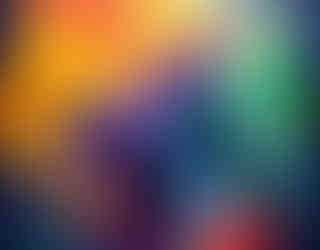Abstracted 1: Where art and the street meet
On paper skateboarding and abstract art have zero in common. One takes place in gritty urban settings, while the other winds up in pristine white galleries, or museums and is part of a tradition in painting that dates back to the early 1900s. The two activities, however, are not as diametrically opposed as you would imagine. The culture and social circles connected to skateboarding influenced graffiti and when brazen tagging turned into a prized art form, dubbed urban art it played a significant role in gentrification cycles. This is one area where ‘art’ and ‘the street’ meet; artists too have been caught up in the regeneration of vacated industrialised urban spaces. Think of how Woodstock is home to a cluster of galleries and draws from the ‘street’ cachet to up its edgy credentials. It is no coincidence that a group of abstract artists who participated in street culture, Paul Senyol, Andrzej Urbanski and Paul Edmunds have studios in this part of town. Their art is influenced by the street too –gliding through urban contexts on a skateboard (or rollerblades in Urbanski’s case) engendered a keen awareness of the built environment. The contours of shapes, surfaces and lines that intersect in cities can be traced in their art.
This curious phenomenon will be the focus of a Saturday’s #artcrawl, a curated walking talking tour created by this author as a means of exploring various narrative threads in contemporary SA art. Abstracted I, as this one is titled, is the first of a series of ‘crawls’ dedicated to coming to grips with the revival of this mode of expression. In this first installment, the three artists, Senyol, Edmonds and Urbanski, found their way into art through the ‘street’ and their abstract art has been heavily influenced by their childhood pursuits.
This is not only confined to these artists, graffiti techniques have been creeping into painting for some time. Typically this is traced through messy lines or the use of spray paint with oils that paraded a desire to ‘destroy’ the underlying image as per graffiti mode. Senyol’s abstract paintings are permeated by seemingly spontaneous lines left by some rebellious ‘tagger’. He was involved in street culture as a teenager growing up in Bellville.
Skateboarding kept him moving through the urban landscape, while tagging and graffiti allowed him to express himself in this environment. This was his introduction to art, or creativity. Like many South Africans he didn’t frequent galleries. He spied the work of famous abstract artists such as Robert Rauchenberg and Cy Twombly in books. He didn’t study art, which has to some degree been an advantage.
“I don’t see boundaries between mediums,” he says. As such his abstract paintings consist of paint, crayon and collage. They are defined by colour blocks which read like different countries, or territories on a map. Skateboarding made him acutely aware of the structure of the urban environment.
“Every bump in the road had an impact, you would be aware of it,” he says.
Urbanski’s art is also defined by colour blocks, though they are angular and overlap in complex compositions that defy logic. Superficially his pristine hard edge paintings appear to have little in common with the seemingly chaotic, soft lines defining Senyol’s compositions. Yet Urbanski attributes his distinctive aesthetic and the architectural quality of his lines to the thirteen years he spent rollerblading through Berlin, where he grew up. For him too, moving through the city on sets of wheels attached to his feet heightened his awareness of the urban landscape, particularly buildings, he says.
Street-based culture had a huge impact in Berlin after the fall of the wall. In the late nineties hip-hop, graffiti, skateboarding proved the glue that would heal a fractured society at a grass roots level.
“I had people from different cultures and parts of Berlin in my crew. I had Turks, East Berliners, West Berliners. We would take a two hour train from east to west just to do a ten minute tag,” recalls Urbanski. Spray paint remains his chosen medium, but he has simply taken it to different levels, employing it as tool to create clean, perfect lines and shapes in bold colours.
It is fitting that Urbanski’s Saltriver studio shares a wall with Edmunds’s, whose abstract drawings and sculptures appear equally pristine, superficially denying any connection to street culture. Nevertheless, Edmunds too has been a keen skateboarder (and surfer) and has been so taken by the design of the skateboard wheels that he has been creating minimalist, abstract sculptures with these found objects. In the installation Pole, Model, Season, Axis, Sole, which showed at the Stevenson gallery in 2013, a collection of wheels are held in different positions via small angular brass plinths.
“Formally they (skateboarding wheels) are interesting in these bright and translucent materials. I am catholic in my taste in materials,” admits Edmunds.
This work and others, using these objects, could be deemed as a celebration of skateboarding, an elevation of it beyond the ‘street’. They also encapsulate movement and the impact shapes have on it and the body. In his late forties, Edmunds choice of materials could be linked to a nostalgia for his youth. He implies that the link to street culture relates to ideas of freedom, not only corporeally through moving at a fast pace through the city but the psychic pay off in doing so.
“Skateboarding is the California of the mind. It is a mythical place for me,” says the artist.
Abstracted I #artcrawl takes place in Cape Town this Saturday. It begins at Rosetta Roastery at the Woodstock Exchange centre on Albert Road and includes visits to Senyol, Urbanski and Edmund’s studios where they will be in conversation with Corrigall. Tickets are R350 and it is advisable to buy them in advance of the crawl on Quicket:































